Input interpretation

(±)-1, 3-butanediol
Chemical names and formulas
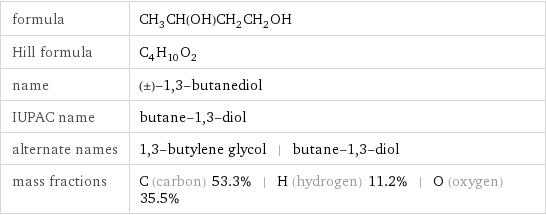
formula | CH_3CH(OH)CH_2CH_2OH Hill formula | C_4H_10O_2 name | (±)-1, 3-butanediol IUPAC name | butane-1, 3-diol alternate names | 1, 3-butylene glycol | butane-1, 3-diol mass fractions | C (carbon) 53.3% | H (hydrogen) 11.2% | O (oxygen) 35.5%
Lewis structure

Draw the Lewis structure of (±)-1, 3-butanediol. Start by drawing the overall structure of the molecule: Count the total valence electrons of the carbon (n_C, val = 4), hydrogen (n_H, val = 1), and oxygen (n_O, val = 6) atoms: 4 n_C, val + 10 n_H, val + 2 n_O, val = 38 Calculate the number of electrons needed to completely fill the valence shells for carbon (n_C, full = 8), hydrogen (n_H, full = 2), and oxygen (n_O, full = 8): 4 n_C, full + 10 n_H, full + 2 n_O, full = 68 Subtracting these two numbers shows that 68 - 38 = 30 bonding electrons are needed. Each bond has two electrons, so the above diagram has all the necessary bonds. There are 15 bonds and hence 30 bonding electrons in the diagram. Lastly, fill in the remaining unbonded electrons on each atom. In total, there remain 38 - 30 = 8 electrons left to draw: Answer: | |
3D structure
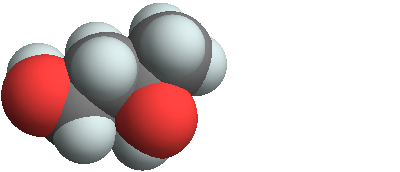
3D structure
Basic properties
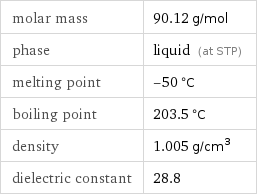
molar mass | 90.12 g/mol phase | liquid (at STP) melting point | -50 °C boiling point | 203.5 °C density | 1.005 g/cm^3 dielectric constant | 28.8
Hydrophobicity and permeability properties

predicted LogP hydrophobicity | -0.58 predicted LogS | 0.92
Basic drug properties

approval status | experimental | small molecule
Liquid properties (at STP)
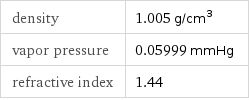
density | 1.005 g/cm^3 vapor pressure | 0.05999 mmHg refractive index | 1.44
Units

Thermodynamic properties

critical temperature | 692.4 K critical pressure | 5.18 MPa (at STP)
Chemical identifiers
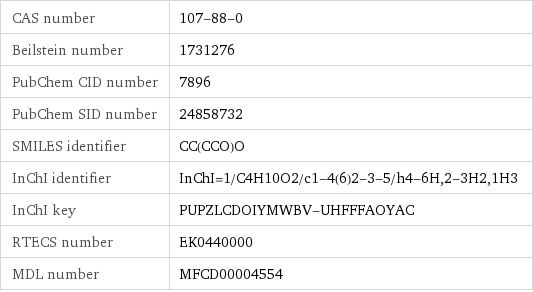
CAS number | 107-88-0 Beilstein number | 1731276 PubChem CID number | 7896 PubChem SID number | 24858732 SMILES identifier | CC(CCO)O InChI identifier | InChI=1/C4H10O2/c1-4(6)2-3-5/h4-6H, 2-3H2, 1H3 InChI key | PUPZLCDOIYMWBV-UHFFFAOYAC RTECS number | EK0440000 MDL number | MFCD00004554
Safety properties

flash point | 121.1 °C